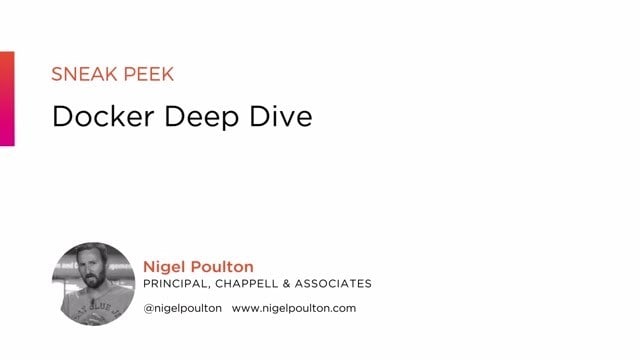
- #BEST WAY TO LEARN DOCKER AND KUBERNETES HOW TO#
- #BEST WAY TO LEARN DOCKER AND KUBERNETES FULL#
- #BEST WAY TO LEARN DOCKER AND KUBERNETES SOFTWARE#
- #BEST WAY TO LEARN DOCKER AND KUBERNETES CODE#
#5 the response return from TensorFlow serving is converted to JSON.#4 make a call to the `tfserving_request` function and pass in the form input alongside the model name into the function.#3 If post request, we obtain the form input from the html using `request.form` remember that `inp1` is the input name.#2 Check if the request made is a POST request.#1 we define the route to load render the html has `/home`, and we also define the request method to be accepted by the route as `GET` and `POST`.Response = requests.post(url=url, json=input_request) #4 return response def tfserving_request (req_input, model_name): #1
#BEST WAY TO LEARN DOCKER AND KUBERNETES CODE#
The next line of code to be added to the app.py is the code that manages and makes a call to the TensorFlow serving API. Also, the code above initializes the flask app. The code above imports the necessary modules such as Flask, request, and the os module. Now that we’ve created the User interface, let’s create the flask app to render the User interface and also handle the request to the TensorFlow serving API.Ĭreate a file name app.py and input the code below: from flask import Flask, render_template, flash, request Here is the code for the UI at index.html: One of the endpoints created is for GRPC, but we will be focusing on the second endpoint which is the REST API endpoint. On running the image, two endpoints are created as shown in the image below.

Hence the source path in which the saved_models is created for the AND logic gate model, is bound to a target path of the same name inside the docker container. The above command starts the tensorflow/serving image by first mounting the model from our local directory to a file path in the Docker container using the command: -mount type= bind, source=path/to/directory/saved_models,target=/saved_models/1602624873 Now let’s run the tensorflow/serving image: docker run -p 8501:8501 -mount type= bind, source=path/to/directory/saved_models,target=/saved_models/1602624873 -e MODEL_NAME=1602624873 -e MODEL_BASE_PATH=/saved_models -t tensorflow/serving
#BEST WAY TO LEARN DOCKER AND KUBERNETES FULL#
NOTE: There is an article on Neptune.ai which explains Tensorflow serving in full details. The first step is to pull the tensorflow serving image from docker-hub.
#BEST WAY TO LEARN DOCKER AND KUBERNETES HOW TO#
It shows how to call a tensorflow serving endpoint API in flask.įirst, let’s serve our AND logic gate model, using Tensorflow serving docker image. This section shows how to infuse tensorflow serving into a flask web app. Incorporating web app with Tensorflow serving image In this section, we will discuss the most essential docker API needed in taking our machine learning project to production and also see how to orchestrate our app with docker-compose. Model.save(file_path, saved_format=’tf’) create some files which are need for Tensorflow serving. The timestamp at the moment of saving the model is obtained and used to create an inner folder in saved_models/ and then the model is saved into the folder. In the code above we infuse the idea of versioning using the time module. Model.fit(data,label,batch_size= 2, epochs= 5)Īfter creating and training the model will need to save the model in a way it can be servable using TensorFlow serving, hence we won’t be saving just the model weight.


Let’s create a file named model.py and input the code below: Import TensorFlow as tfĭata=tf.constant(,]) The model is a AND logic gate model, and since the main focus of the article is not on how to create a model or neither how to train it, this part will be less explained. In this article section, we will be creating a simple ML model, which we will use to solidify the concept to be introduced. NOTE: You can obtain the code used for the article here.

In summary, we will see how to eradicate some difficulties which arise when following the conventional methods, such as: In this article, we will also follow a project-based method, which will make it possible for you to just port the ideas and code shown directly into your machine learning project.
#BEST WAY TO LEARN DOCKER AND KUBERNETES SOFTWARE#
“…so hard, the rare data scientist who can also develop quality software and play engineer is called a unicorn!”- Elle O’Brien Hence, if you are just like me, ready to up your game and add one of the tools to become a Unicorn data scientist, as described by Elle O’Brien in this article, then this article is for you. The journey and curiosity led to this article. Along the line, I discovered I need to know more (maybe just a little) of Kubernetes needed for deploying, orchestrating, and scaling machine learning apps. TensorFlow extended and Kubeflow (Kubernetes made easier for machine learning projects). I started diving deep into TensorFlow serving. 📚 Machine Learning Model Management in 2021 and Beyond – Everything That You Need to Know


 0 kommentar(er)
0 kommentar(er)
